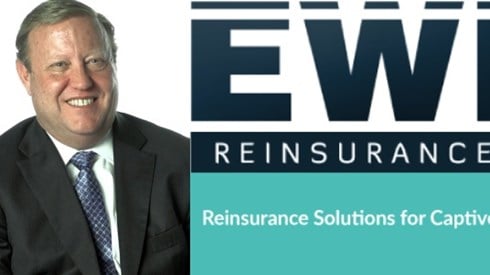Key Criteria for Selecting a Captive Claims TPA

November 15, 2018

For many captive insurers, one of the first professional vendors they need to retain is a qualified third-party administrator (TPA) to handle claims. Speaking from experience, this editor has seen how good claims TPAs can help develop a successful captive insurer while a weak TPA can create large problems and ill will between captive management, captive owners, and regulators. So how should a captive insurer go about selecting a claims management TPA? Below we suggest a series of key criteria for selecting a captive claims TPA.
There are myriad companies that provide claims management services to insurers and captives. But how does a captive go about winnowing down this list to a manageable group to interview? As a starting point, the captive needs to determine what kind of TPA is needed. Does the captive insurer write only a single line of coverage? If so, it will want to find claims management TPAs that specialize in that line of business. Their specialization will result in more efficient and accurate claims practices, leading to better overall results for the captive.
However, if the captive is a multiline insurer, it will need a TPA that understands all of the lines of business the captive intends to write. The key is to determine whether the captive insurer will be evenly diversified across all coverages or have a concentration in a specific coverage. If the captive has a high concentration in a specific business, this should also be true of the TPA it selects. If business is more evenly distributed, it needs to seek out a well-rounded TPA with expertise in multiple lines.
Once a captive insurer determines that a TPA has the right expertise to handle the claims the captive will generate, it needs to drill down further and begin to look at the TPA's claims adjusters. Questions to raise include the following.
- What is the overall experience level of the adjusters?
- Are adjusters stratified by experience level so that more senior and knowledgeable adjusters handle more complex claims?
- What is the average tenure of its adjusters?
- How are its adjusters compensated, and what specific metrics are used to judge overall competence?
But the key criteria in our opinion are the average and maximum caseloads assigned to each adjuster. It should not come as a surprise that claims TPAs compete on the basis of professional fees. Therefore, TPAs have a built-in incentive to maximize the caseloads handled by individual adjusters thereby reducing its personnel costs. From our perspective, it is better to pay a bit more from a professional fee standpoint and hire a TPA that allows its adjusters to carry lower caseloads. Remember, one bad claim result due to a mistake by the adjuster can easily offset all of the savings from a lower professional service fee. The 80/20 rule applies—typically 80 percent of costs will be in actual losses while 20 percent covers the loss adjustment expenses.
Assuming the TPAs the captive is considering have passed this initial set of screens, it's time to drill a bit deeper. Claims events happen all hours of the day and night and potentially, for some larger captives, across multiple time zones. What capabilities does the TPA offer in terms of 24/7 claims administration? Is the TPA accessible via telephone, the web, email, and/or fax, and what is the typical response time to potential claimants? If the TPA only offers web, email, or fax reporting services after hours, how does it control for quality and integrity of the data being submitted?
In addition to 24/7 reporting capabilities is scalability. There is always the possibility that the captive's claim volume could spike either due to a catastrophe or sometimes just due to the nature of the business. In the event this happens, how does the TPA under consideration handle rapid increases in claims volume? What quality controls are in place to ensure the increased load is handled both accurately and efficiently? If it is a smaller TPA firm, does it have preexisting arrangements in place to add more staff either through temporary outsourcing or through relationships with other TPA firms?
The human element is only half of the equation in claims TPAs. Today, the claims systems are equally important. Captives should require a full demo of the TPA's claims systems. While this can be done on-site in the TPA's office, it is better to have the demo the system at the captive's location. Things to consider include the following.
- How user-friendly is the claims system, especially for people who are not claims professionals? Can the captive manager, accountants, actuaries, and outside legal counsel navigate the system to get the information they need?
- Does it have all of the functionality the captive requires? One of the biggest problems we have seen with many claims management systems is their inability to effectively handle the nuisances of reinsurance and reinsurance reporting. Efficiency and accuracy is lost if the captive is required to maintain a separate spreadsheet for monitoring and reporting on claims that breach their reinsurance layers
- Obviously, in this day and age, the overall security of the claims system is another aspect. Has the system been breach tested? If so, what were the results? Has the TPA ever been hacked, and, if so, what was compromised? Does the system use two-factor authentication and a virtual private network for parties not physically based in the TPA office?
Other items for consideration include the availability of annual or more frequent in-person claims reviews and benchmarking information. At the very minimum, the TPA should offer to review all high-value claims in person on whatever basis the captive feels is necessary. Benchmarking data and the accompanying data analytics can be invaluable for a captive to gain a better understanding of its book of business.
Lastly, don't overlook the softer, more subjective side of the equation. How well do captive management and the board mesh with the people in the TPA firm? Is there a high degree of comfort that the TPA will provide the level of service the captive expects and wants for it and its policyholders? Ask about the average length of its relationships with clients, what the longevity of their oldest client is, and what the average client turnover is.
Remember, substantial due diligence up front will pay large dividends down the road.
November 15, 2018



